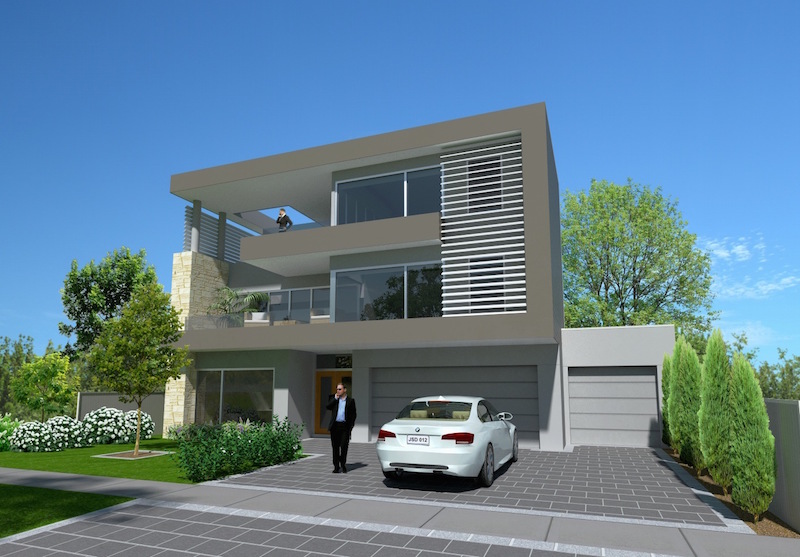When it comes to creating the hero shot perspective of your design it is important to decide what form of image will sell the idea to your client the best and which type of rendering is the most appropriate for your circumstances.
Sketchup has the ability to produce both types of image. Sketchup’s ability to make low detail 3d models look like they were created by hand is what made Sketchup famous, whereas photorealistic imaging can be achieved using one of the many 3rd party rendering plugins that are available from independent developers.

In the time before 3d CAD software was mainstream, perspective scenes were typically drawn by hand by an architectural illustrator. The beauty of these images was not in their realistic portrayal of the proposed buildings, but rather the fantasy that they conjured in the viewer’s imagination. Sketchy perspectives don’t try to copy real life but instead allow the viewer to fill in the gaps with their own mental idealism.
Another advantage of the sketchy perspective is that it is open to interpretation and affords the designer some latitude to make changes even after the perspective has been presented to the client. This is because the sketchy perspective is always considered to be an approximation or interpretation of reality, thus giving the designer some space to move when it comes to finalising the details.
In contrast, photorealistic imaging can often galvanise a viewer’s opinion about a design because they feel that they are seeing exactly what the future building will look like and anything that is not in the picture simply does not exist. There is no fantasy or imagination to enhance the image; well this is not really true because a skilled rendering artist can create that fantasy in a photorealistic render too, it is just a lot more work and experience. The photorealism also needs to be done exceptionally well because any inconsistencies to that realism can become a negative distraction.

Getting a photorealistic render to look just right is a skill that not everybody has. It involves tweeking the subtleties of material properties to match how a material would look in real life, and careful observational skill is required to do this correctly. Good photographers are often better than most when it comes to fine-tuning the detail in a photorealistic render. When generating a photorealistic render, generally this fine-tuning is the most time consuming part of the image generation because you have to visually test and retest changes to material settings until they are satisfactory.
While photorealistic images take considerably more time to produce and are open to a higher level of scrutiny, a beautiful photorealistic image can be a stunning showpiece to any design. They can make a viewer feel like they are experiencing the real thing. Photorealistic renders are great for selling apartments off-the-plan because people look at the images and see themselves there.
Whether you go with sketchy or photorealistic images is ultimately your choice, but do always consider whether the effort you are putting into the creation of your image will be properly appreciated and help you to achieve the desired outcome.
I have created photorealistic images for other architects for many years, but for my own project work as an architect, I have only ever presented sketchy perspectives; and my clients have been happy with this level of imagery. No one has ever asked me to provide more realism. When I do need to create photorealistic images, which I have done for other architects, I don’t try to go for accurate realism, basically because it takes too long get it perfect and spending too much time on a glossy image doesn’t pay the bills. Instead I tend to oversaturate colours and use non-photorealistic skies and elements to create a kind of abstract realism that looks better than real life. There are other people around who are much better at producing accurate realism and I am happy to leave it to them… :)
